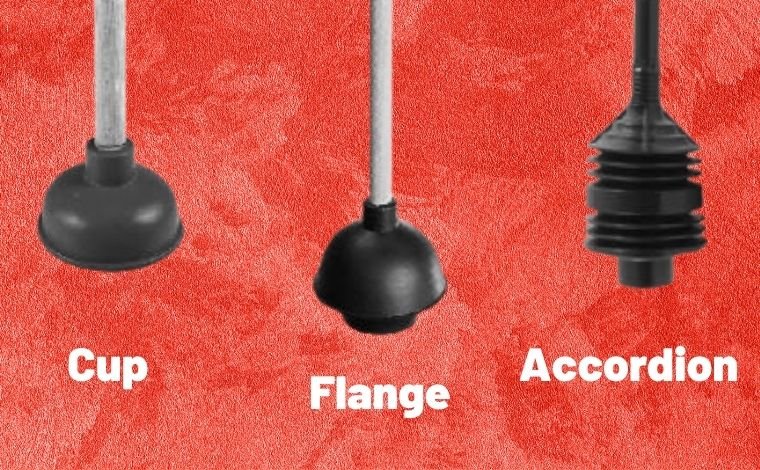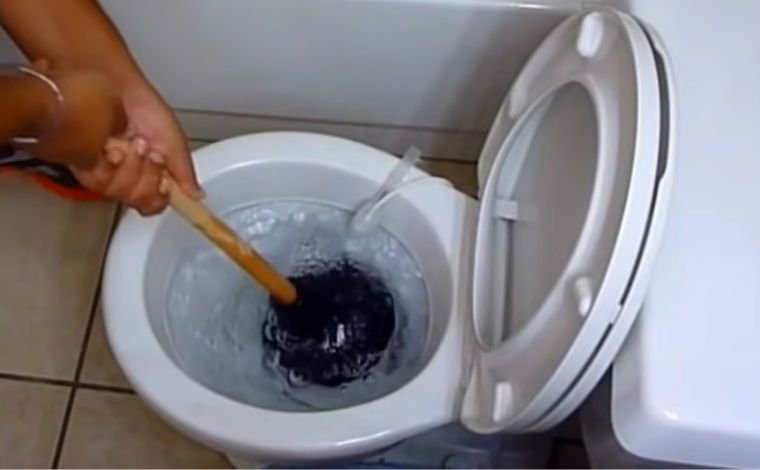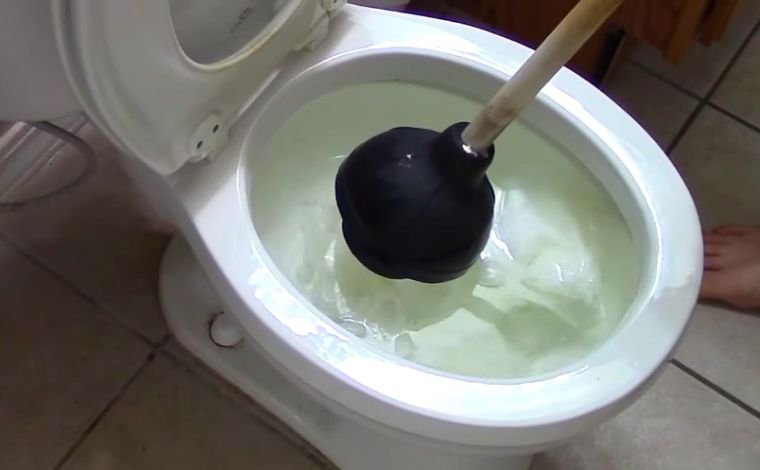A clean and functional bathroom is a must for every household. You probably can’t imagine a single day without using your restroom or kitchen sink. But what happens when your toilet suddenly clogs or your sink won’t drain? It’s frustrating, right?
In most cases, the problem is caused by excessive toilet paper, hair, grease, or even small debris that blocks the drain. Calling a plumber for such a minor issue can be time-consuming and costly. That’s why having a plunger is a smart move — it helps you unclog your toilet or sink instantly without professional help.
However, not all plungers are the same. You’ll find different types on the market, mainly sink plungers and toilet plungers. Many people mistakenly use one for the other, which can damage the drain or fail to remove the clog effectively.
This guide explains everything you need to know about the sink plunger vs toilet plunger — including how they work, how to use them properly, and a detailed comparison chart with a photo reference.
What Is a Plunger?
A plunger is a simple yet powerful tool designed to remove blockages from sinks, drains, and toilets. It works on the principle of air pressure and suction.
When you push and pull the plunger’s handle, the rubber cup creates a vacuum seal over the drain. This motion builds up pressure inside the pipe, forcing the blockage to move or break apart. Once the clog loosens, the water drains away smoothly.
In short, the plunger uses pressure, suction, and water displacement to clear the blockage — no chemicals required.
Why You Need a Plunger
Many homeowners underestimate how useful a plunger can be until they face an emergency. Having a plunger at home saves you both time and money.
Here’s why you should always keep one nearby:
1. Saves Plumber Costs
Clogged sinks and toilets are common issues. Hiring a plumber for every small blockage can be expensive. With a good plunger, you can easily fix most clogs yourself.
2. Saves Time
Waiting for a plumber to arrive can take hours. A plunger allows you to handle the situation immediately, restoring normal use of your sink or toilet within minutes.
3. Prevents Bigger Problems
Ignoring minor clogs can lead to severe blockages or pipe damage over time. Regular plunging helps prevent such issues before they become costly repairs.
4. Eco-Friendly Solution
Unlike chemical drain cleaners, plungers rely on mechanical suction, which is safe for your plumbing and the environment.
Different Types of Plungers
Not all plungers are built the same. Their designs vary depending on the type of drain they’re meant to unclog. Using the wrong plunger can damage your drainage system or simply won’t work.
The three most common types of plungers are:
-
Sink (Cup) Plunger
-
Toilet (Flange) Plunger
-
Accordion Plunger
Let’s focus on the first two since they are the most widely used at home.
What Is a Sink Plunger?
A sink plunger, also known as a cup plunger, is the most basic and recognizable type. It has a straight wooden or plastic handle and a flat rubber cup at the end.
This design is ideal for flat surfaces like sinks, bathtubs, and showers. The flat rim of the cup forms a perfect seal over the drain opening, creating suction when pressed down.
Sink plungers are perfect for:
- Kitchen sinks
- Bathroom sinks
- Bathtubs
- Shower drains
However, they are not suitable for toilets, because toilet drains are curved and require a different seal shape.
How to Use a Sink Plunger (Step-by-Step)
Using a sink plunger is easy and takes just a few minutes. Follow these simple steps:
-
Fill the sink partially with water.
About two inches of water helps create an airtight seal between the cup and the drain. -
Place the cup directly over the drain.
Ensure the rubber cup completely covers the drain hole. -
Push and pull the handle firmly.
Use an up-and-down motion to build suction and pressure. The key is to maintain a good seal while plunging. -
Repeat several times.
Do about 15–20 plunges. You’ll feel the resistance lessen as the clog breaks apart. -
Remove the plunger and test the drain.
If water flows freely, the clog is gone. If not, repeat the process or check for deeper obstructions.
What Is a Toilet Plunger?
A toilet plunger, also called a flange plunger, is specifically designed for toilet bowls. Unlike the flat-bottom sink plunger, it has a bell-shaped rubber cup with an extended rubber flap (flange) at the bottom.
This flexible flange fits snugly inside the toilet drain’s curved opening, allowing for a stronger seal and better pressure.
The bell shape helps it maintain suction even underwater — which is crucial when unclogging toilets.
How to Use a Toilet Plunger (Step-by-Step)
Here’s the correct way to use a toilet plunger safely and effectively:
-
Add enough water to the bowl.
Ensure the plunger’s rubber cup is fully submerged for better suction. -
Position the plunger.
Insert the flange into the toilet drain and ensure it fits tightly into the opening. -
Push and pull gently at first.
This helps remove trapped air. Then, plunge more vigorously while maintaining the seal. -
Use consistent up-and-down motion.
Continue for about 15–20 seconds. You’ll feel pressure build up as the clog loosens. -
Check the water level.
If the water starts to drain, the clog is cleared. If not, repeat the plunging cycle. -
Clean and disinfect afterward.
Always rinse your plunger with hot water and disinfectant after use.
Sink Plunger vs Toilet Plunger: Key Differences
Although both tools share a similar purpose — unclogging drains — they are designed differently for specific tasks. Using a toilet plunger for a sink (or vice versa) can make the situation worse.
Here’s how they differ:
1. Design and Shape
-
Sink Plunger: Has a flat rubber cup that works best on smooth, flat surfaces like sinks and tubs.
-
Toilet Plunger: Features a bell-shaped cup with a flange that fits into the toilet’s curved drain opening.
2. Application
-
Sink Plunger: Ideal for flat drains in sinks and bathtubs.
-
Toilet Plunger: Specifically built for toilet bowls and curved drains.
3. Seal Efficiency
-
Sink Plunger: Creates a seal only on flat surfaces.
-
Toilet Plunger: Works on both flat and uneven surfaces due to its flexible flange.
4. Material and Rubber Quality
-
Sink Plunger: Usually made with stiffer rubber to handle solid blockages in kitchen or bathroom sinks.
-
Toilet Plunger: Made of softer rubber to create a better seal in the curved toilet bowl.
5. Price
-
Sink Plunger: Typically cheaper because of its simple design.
-
Toilet Plunger: Slightly more expensive due to its extended flange and flexible structure.
6. Ease of Use
-
Sink Plunger: Easier to use because you only need to work with a flat surface.
-
Toilet Plunger: Requires correct positioning to form a seal in the bowl.
Comparison Chart: Sink Plunger vs Toilet Plunger
| Feature | Sink Plunger (Cup Type) | Toilet Plunger (Flange Type) |
|---|---|---|
| Design | Flat rubber cup | Bell-shaped cup with extended flange |
| Primary Use | Sinks, bathtubs, and showers | Toilets and curved drains |
| Surface Compatibility | Flat surfaces only | Works on both flat and curved surfaces |
| Rubber Quality | Harder and less flexible | Softer and more flexible |
| Seal Strength | Moderate suction | Strong airtight seal |
| Ease of Use | Very easy | Requires correct positioning |
| Price Range | Low | Moderate |
| Durability | Long-lasting | Long-lasting but softer material |
| Best For | Kitchen and bathroom sinks | Toilets and deep clogs |
Can You Use a Sink Plunger for a Toilet?
Technically, you could try, but it won’t work efficiently. A sink plunger cannot form a proper seal inside the curved toilet drain. As a result, air escapes instead of building pressure, making it nearly impossible to clear the blockage.
On top of that, using a sink plunger in the toilet can cause messy splashes — something you definitely want to avoid.
So, if your toilet is clogged, always use a flange (toilet) plunger.
Can You Use a Toilet Plunger for a Sink?
You can use a toilet plunger on a sink in an emergency, but it’s not ideal. The extended flange may prevent the plunger from forming a tight seal on flat surfaces, reducing its effectiveness.
Additionally, using the same plunger for both your toilet and kitchen sink is unsanitary. You don’t want to mix bathroom bacteria with your kitchen sink where you clean dishes or prepare food.
It’s best to keep two separate plungers — one for toilets and another for sinks.
Tips for Maintaining and Storing Your Plunger
- Clean after every use: Rinse thoroughly with hot water and mild detergent.
- Disinfect: Use a household disinfectant or a vinegar solution to kill germs.
- Dry properly: Hang it upside down to air dry completely.
- Store separately: Keep toilet and sink plungers apart to prevent cross-contamination.
- Inspect regularly: Check for cracks or tears in the rubber that can reduce suction.
When to Call a Plumber
While plungers are great for minor blockages, some clogs may be too deep or stubborn. Call a professional plumber if:
- Water backs up in multiple drains simultaneously.
- You hear gurgling sounds from other fixtures.
- The clog returns frequently after plunging.
- There’s an unpleasant odor that won’t go away.
These signs could indicate a more serious plumbing issue that needs professional attention.
Final Discussion
Clogging a toilet or sink is a common household problem, but knowing which plunger to use makes all the difference. A sink plunger (flat cup) is perfect for kitchen and bathroom sinks, while a toilet plunger (flange type) is designed for toilets with curved drains.
Using the right plunger ensures effective suction, prevents mess, and avoids damaging your plumbing system. For hygiene and efficiency, keep two separate plungers in your home — one for the sink and another for the toilet.
Next time your sink or toilet clogs, you’ll know exactly which tool to grab and how to use it like a pro!
Hi, this is Robert Crossan, the owner of this website, has 17 years of experience in the installation, maintenance, and repair of toilets and plumbing systems. After completing the Level 2 Basic Plumbing course in 2005, I started working in both domestic and commercial buildings as a professional plumber. So I can figure out the core difference between different toilet models and brands. It also helped me monitor their work performance and setbacks.